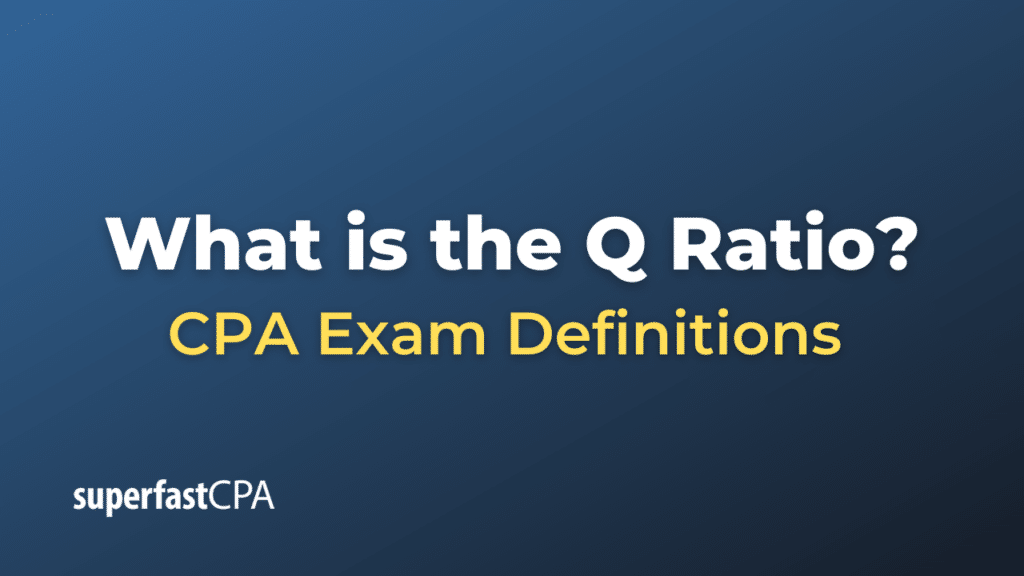Q Ratio
The Q ratio, also known as Tobin’s Q, is a measure of a firm’s market value compared to its replacement cost. It is named after James Tobin, a Nobel laureate who hypothesized that the combined market value of all the companies on the stock market should be about equal to their replacement costs.
The Q ratio is calculated as:
Q Ratio = Market value of a firm / Replacement cost of the firm’s assets
- The market value of a firm is often approximated by the total market capitalization of the company (i.e., share price multiplied by the number of outstanding shares).
- The replacement cost of the firm’s assets is often approximated by the company’s book value (total assets minus intangible assets and liabilities), which is available on the balance sheet.
If the Q ratio is greater than 1, it suggests that the firm is overvalued because it would cost less to replace the company’s assets than to buy the company on the open market. If the Q ratio is less than 1, it suggests that the firm is undervalued because it would cost more to replace the company’s assets than to buy the company on the open market.
It’s important to note that, while the Q ratio can be a useful tool for comparing companies or tracking market trends, it also has limitations. For example, it may not accurately reflect the value of intangible assets such as intellectual property, brand value, or the skill of a company’s employees. Additionally, book values might not reflect the current market prices of assets, especially in times of rapid inflation or deflation.
Example of the Q Ratio
Suppose we have a tech company, let’s call it TechCo, which currently has a market capitalization of $10 billion. This market capitalization is the market value of TechCo, calculated by multiplying the current share price by the total number of outstanding shares.
Now, let’s say that the replacement cost of TechCo’s assets (its physical assets, property, and any other tangible assets) is $8 billion.
So, to calculate the Q ratio for TechCo, we would divide the market value by the replacement cost of the assets:
Q Ratio = Market Value / Replacement Cost of Assets
Q Ratio = $10 billion / $8 billion
Q Ratio = 1.25
In this case, the Q ratio for TechCo is 1.25.
This suggests that TechCo is overvalued according to Tobin’s Q, since the market value is greater than the replacement cost of the assets. In other words, it would cost less to create a similar company from scratch by buying and assembling the assets than it would to buy TechCo on the open market.
Remember, this is a simplified example and in reality, calculating the Q Ratio can be quite complex due to difficulties in accurately estimating the replacement cost of a firm’s assets. Also, the Q Ratio is just one of many valuation tools and should not be used in isolation when making investment decisions. Other factors, including a company’s earnings, growth potential, the state of the economy, and so on, should also be considered.













